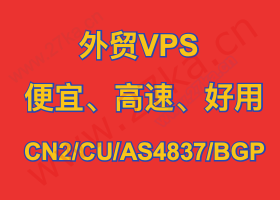这篇文章主要介绍了ASP.NET用户控件怎么用,具有一定借鉴价值,感兴趣的朋友可以参考下,希望大家阅读完这篇文章之后大有收获,下面让小编带着大家一起了解一下。
ASP以及ASP.NET历史回顾
ASP.NET技术虽然算是从ASP演变而来的,不过使用起来确实是两码事。我们先看看这两个技术的历史:在90年代初,Microsoft为Web程序员提供的 Active Server Pages(ASP)革命性地改变了Web的编程。它可以利用十分易用的模型在Web服务器上动态生成HTML,并且很容易的实现了对数据库的访问,就当时来说,这是一项多么吸引人的技术,包括现在Internet上的许多web站点都是用Asp写的,我的同事前辈们更是玩Asp的高手,经历这么多年而不衰,可见他的成功。
但是,技术是在不断的发展着,引用某位Net专家的话讲――如今Web编程的状态还是落后的。因此Microsoft提出了第二代编程模型――Web窗体。Web窗体模型作为Asp.net的一部分,而Asp.net又是.Net框架的一个部分。他的编程模型是基于事件的,使用他更像是在进行Windows窗体编程,这一点也正是我决定去学习使用他的一个重要原因,也胡乱看了一些这方面的书,写这篇文章的目的也就是和各位Asp.net初学者和还没有为用户控件添加过自定义事件的同行分享一下经验。
建立一个简单的ASP.NET用户控件
废话少说,下面就让我们先建立一个用户控件吧,这里就用一个简单登录用户控件来做演示。
先来看看用户控件的前台代码(LogInOutControl.ascx文件):
< %@ Control Language="c#" AutoEventWireup="false" Codebehind="LogInOutControl.ascx.cs" Inherits="ZZ.LogInOutControl" TargetSchema="http://schemas.microsoft.com/intellisense/ie5"%> < TABLE id="Table1" style="FONT-SIZE: 9pt; WIDTH: 183px; HEIGHT: 125px" cellSpacing="1" cellPadding="1" width="183" align="center" border="1"> < TR> < TD height="20"> < asp:Label id="LabelUser" runat="server">用户:< /asp:Label> < asp:TextBox id="TextBoxUserName" Width="128px" runat="server">< /asp:TextBox>< /TD> < /TR> < TR> < TD height="20">< FONT face="宋体"> < asp:Label id="LabelPassword" runat="server">密码:< /asp:Label> < asp:TextBox id="TextBoxPassword" Width="128px" runat="server" TextMode="Password">< /asp:TextBox>< /FONT>< /TD> < /TR> < TR> < TD align="center" height="20">< FONT face="宋体"> < asp:Button id="ButtonLogIn" Width="50px" Text="登录" runat="server">< /asp:Button> < asp:Button id="ButtonLogOut" Width="49px" Text="注销" runat="server">< /asp:Button>< /FONT>< /TD> < /TR> < /TABLE>
我们简单的放了两个Label,两个TextBox,两个Button以及一个Html表。
接下去就是为LogInOutControl.ascx.cs文件添加代码了。
首先定义一个delegate,其中LogInOutEventArgs类是从EventArgs类继承,
public delegate void LogInOutClickHandler(object sender,LogInOutEventArgs e);
我觉得把这个delegate放在LogInOutControl类外面更为合适。
接下去为控件声明了LogInOutClick事件,如下:
public event LogInOutClickHandler LogInOutClick;
另外为了更好的使用属性,加了Language枚举,
private Language language;
当然外部通过public Language Lg {get;set;}属性来访问。目的就是改变或者获取当前控件的显示。
接下去就是定义控件事件触发函数OnLogInOutClick,由按钮单击事件处理函数来完成对用户控件事件的触发。
ASP.NET用户控件完整代码如下:
namespace ZZ { using System; using System.Data; using System.Drawing; using System.Web; using System.Web.UI.WebControls; using System.Web.UI.HtmlControls; // 定义代理 public delegate void LogInOutClickHandler(object sender,LogInOutEventArgs e); public class LogInOutControl : System.Web.UI.UserControl { protected System.Web.UI.WebControls.Button ButtonLogIn; protected System.Web.UI.WebControls.TextBox TextBoxUserName; protected System.Web.UI.WebControls.TextBox TextBoxPassword; protected System.Web.UI.WebControls.Button ButtonLogOut; protected System.Web.UI.WebControls.Label LabelUser; protected System.Web.UI.WebControls.Label LabelPassword; public event LogInOutClickHandler LogInOutClick; private Language language; //方法 public void ChangeLanguage(Language language) { this.Lg = language; } //属性 public Language Lg { set { if(value!=this.language) { if(value==Language.English) { this.LabelUser.Text = "User:"; this.LabelPassword.Text ="Password:"; this.ButtonLogIn.Text = "LogIn"; this.ButtonLogOut.Text = "LogOut"; } else { this.LabelUser.Text = "用户:"; this.LabelPassword.Text ="密码:"; this.ButtonLogIn.Text = "登录"; this.ButtonLogOut.Text = "注销"; } } } } private void Page_Load(object sender, System.EventArgs e) { if(this.LabelUser.Text=="User:") this.language = Language.English; else this.language = Language.Chinese; } private void OnLogInOutClick(object sender,LogInOutEventArgs e) { if(LogInOutClick!=null) LogInOutClick(this,e); } #region Web 窗体设计器生成的代码 override protected void OnInit(EventArgs e) { InitializeComponent(); base.OnInit(e); } private void InitializeComponent() { this.ButtonLogIn.Click += new System.EventHandler(this.ButtonLogIn_Click); this.ButtonLogOut.Click += new System.EventHandler(this.ButtonLogOut_Click); this.Load += new System.EventHandler(this.Page_Load); } #endregion private void ButtonLogIn_Click(object sender, System.EventArgs e) { OnLogInOutClick(this,new LogInOutEventArgs(LogInClickType.LongIn,CustomValidate(this.TextBoxUserName.Text,this.TextBoxPassword.Text))); } private void ButtonLogOut_Click(object sender, System.EventArgs e) { //注销代码省略 OnLogInOutClick(this,new LogInOutEventArgs(LogInClickType.LongOut,true)); } //验证函数 private bool CustomValidate(string userName,string password) { //验证代码省略,假设通过 return true; } } }
另外一个文件定义了枚举和参数类:
using System; namespace ZZ { public class LogInOutEventArgs : EventArgs { private LogInClickType type; private bool result; public LogInOutEventArgs(LogInClickType type,bool result):base() { this.type = type; this.result = result; } public LogInClickType Type { get{return this.type;} } //操作结果, public bool Result { get{return this.result;} } } //操作类型 public enum LogInClickType : int { LongIn, LongOut } //定义语言 public enum Language { Chinese, English } }
接下去看看在aspx页面里面使用ASP.NET用户控件。
新建一个Default.aspx页面,拖一个LogInOutControl用户控件到上面。
< %@ Register TagPrefix="uc1" TagName="LogInOutControl" Src="LogInOutControl.ascx" %> < %@ Page language="c#" Codebehind="Default.aspx.cs" AutoEventWireup="false" Inherits="ZZ.Default" %> < %@ Import Namespace="ZZ" %> < HTML> < HEAD> < title>WebForm1< /title> < /HEAD> < body> < form id="Form1" method="post" runat="server"> < FONT face="宋体"> < uc1:LogInOutControl id="LogInOutControl1" runat="server"> < /uc1:LogInOutControl> < asp:Label id="LabelMsg" runat="server">< /asp:Label> < asp:DropDownList id="DropDownList1" runat="server" AutoPostBack="True"> < asp:ListItem Value="0" Selected="True">中文< /asp:ListItem> < asp:ListItem Value="1">英文< /asp:ListItem> < /asp:DropDownList>< /FONT> < /form> < /body> < /HTML>
在后台代码中添加事件和属性。
虽然在前台添加了LogInOutControl1,但是后台代码中不会生成protected LogInOutControl LogInOutControl1;这条语句,我觉得很奇怪,不管先加上他。
接着在Page_Load事件中注册LogInOutClick事件:
this.LogInOutControl1.LogInOutClick += new LogInOutClickHandler(LogInOutControl1_LogInOutClick);
完整代码如下:
using System; using System.Collections; using System.ComponentModel; using System.Data; using System.Drawing; using System.Web; using System.Web.SessionState; using System.Web.UI; using System.Web.UI.WebControls; using System.Web.UI.HtmlControls; namespace ZZ { public class Default : System.Web.UI.Page { protected System.Web.UI.WebControls.Label LabelMsg; protected System.Web.UI.WebControls.DropDownList DropDownList1; protected LogInOutControl LogInOutControl1; private void Page_Load(object sender, System.EventArgs e) { //注册用户控件事件 this.LogInOutControl1.LogInOutClick += new LogInOutClickHandler(LogInOutControl1_LogInOutClick); } #region Web 窗体设计器生成的代码 override protected void OnInit(EventArgs e) { InitializeComponent(); base.OnInit(e); } private void InitializeComponent() { this.DropDownList1.SelectedIndexChanged += new System.EventHandler(this.DropDownList1_SelectedIndexChanged); this.Load += new System.EventHandler(this.Page_Load); } #endregion private void LogInOutControl1_LogInOutClick(object sender, LogInOutEventArgs e) { switch(e.Type) { case LogInClickType.LongIn: this.LabelMsg.Text = "你点击了登录按钮,操作结果:"+e.Result.ToString(); break; case LogInClickType.LongOut: this.LabelMsg.Text = "你点击了注销按钮,操作结果:"+e.Result.ToString(); break; } } private void DropDownList1_SelectedIndexChanged(object sender, System.EventArgs e) { this.LogInOutControl1.Lg = (Language)this.DropDownList1.SelectedIndex; //this.LogInOutControl1.ChangeLanguage((Language)this.DropDownList1.SelectedIndex); } } }
当用户在前台通过选择下拉框列表来改变控件的语言,这里通过Lg属性来完成,不过这里也加了一个方法ChangeLanguage也可以实现同样的功能。另外,通过点击登陆或注销按钮触发LogInOutClick事件来给页面中的LabelMsg.Text属性赋值从而得到操作结果。
总结,用户控件为程序员带来了很高的开发效率和重用性,更是在性能方面有了很大的提高,以前称为Asp+,其实我认为Asp.net跟Asp没有什么直接联系。而且我想做应用程序的朋友和我一样在开发Web程序时更喜欢采用代码分离方式,这样结构更清晰,便与修改和管理。同Asp程序相比,他是编译型的,引入了面向对象的设计思想,也就不可避免的带来了他的复杂性,要想开发高水准的Asp.net程序,对于模式的设计,层次结构的划分,这里还是比较讲究的。总之,他更像是在编Windows窗体程序,而不是在写VB脚本。
感谢你能够认真阅读完这篇文章,希望小编分享的“ASP.NET用户控件怎么用”这篇文章对大家有帮助,同时也希望大家多多支持云,关注云行业资讯频道,更多相关知识等着你来学习!








